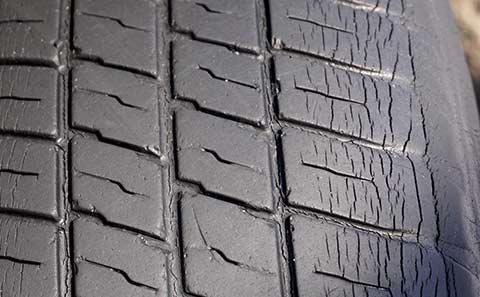What do your asymmetric tires offer?
Manufacturers design tires with different tread patterns, in order to optimize specific tires for various weather conditions. Drivers can find the perfect tire set for their vehicles, which brings out their full potential.
Asymmetrical tires are no different. Let us be your guide today through everything you need to know about asymmetric tires.
The Four Main Parts of Every Tire Tread
All asymmetric tread patterns feature the same four main tread parts that work together in order to provide the necessary traction.
The four main parts of tire tread patterns are:
- Ribs – raised section on the footprint that is usually made up using blocks
- Grooves – various circumferential and lateral grooves are channels in the tread patterns
- Blocks – rubber segments located on the footprint, making contact with the road
- Sipes – thin slots on the tread area that provide extra biting edges
What are Asymmetric Tires?
Simply put, an asymmetrical tire is one that sports an asymmetric tread pattern. It is one of the three main tire tread types. Brands use this type of tread pattern on tires to capture a wider performance range and to provide optimized tire grip.
The Asymmetrical Tire Tread Pattern
Asymmetric tires are able to use their versatile tread blocks, tire grooves, and tire sipes to provide dry, winter, and wet traction in versatile weather conditions. In other words, their tread design is not identical on the tire’s two sides (inner and outer tire patterns).
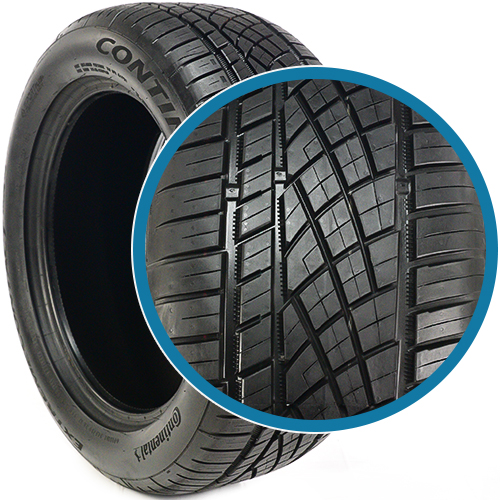
Usually, the inner and outer tread areas work together to increase the tire’s performance. The stable tread blocks of the outer tire design are tasked with providing traction during cornering, better comfort levels, and excellent dry grip. On the other hand, the inner tire tread increases hydroplaning resistance, as it intends grooves in tires to disperse water and slush from the footprint.
Brands usually use asymmetric designs for high performance tire models, as they allow these tires to perfect their traction and durability.
The key features of asymmetric tires include:
- Enhanced controllability
- Better maneuvering stability
- Increased wet weather traction
The Pros and Cons of Asymmetrical Tires
Like other tire treads, the asymmetrical pattern also has its ups and down. Manufacturers optimize versatile types of tire tread patterns to perform in various manners. The asymmetrical tire is no different.
When it comes to their positive aspects, asymmetrical tires have plenty. First of all, the different tread patterns on the inner and outer areas enable its applications in distinct weather conditions. This is because tire manufacturers are able to mold two tire designs into one.
Continuing from this, if your tire’s tread is asymmetric, better wet and dry traction and hydroplaning resistance are to be expected. Its controllability and cornering capabilities are also greatly improved with its higher lateral stiffness, which is crucial for high performance tires.
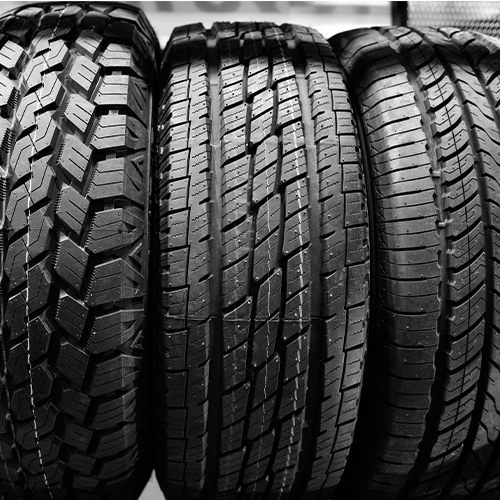
This all sounds magnificent, but what’s the catch?
Well, price, fitment, and rotational patterns.
Compared to symmetric tires, asymmetric tires cost more as they often belong to the high performance category. Additionally, their tread design’s details make production a bit more costly as well.
These tires have to be mounted on the vehicle in a specific manner. Tire brands mack tire rotation direction on the tires’ sidewalls. Asymmetrical tires mounted wrong (opposite of their tire tread direction) will hinder the car’s traction and performance.
Lastly, there are limitations in tire rotation options with asymetrical tires. Tire rotation is when you move the tires’ from one position to another on the vehicle. This allows them to improve their performance and tread wear rate. However, asymmetric tires have specific rules for tire rotation patterns. Let’s talk a bit more about that.
Rotating Asymmetrical Tires
So, how to rotate asymmetrical tires?
You have to mount asymmetrical tires in specific manners. While you are not limited in the rotation pattern you may use, mechanics have to mount tires with an asymmetric tire tread pattern correctly.
Brands highlight this on the tires’ sidewalls. When asymmetrical tires are rotated, the sidewall facing away from the vehicle cannot be changed. Keep in mind that asymmetric tires are not the same as directional tires.
What is a directional tire? you might ask. It is a model that has to be mounted on a specific side of the vehicle. Unlike asymmetrical and symmetrical tires, directional patterns have limited tire rotational patterns.
Asymmetrical vs Symmetrical Tires
What’s the difference between an asymmetric tire and a symmetric one?
At first glance, it is the tire pattern. As their name suggests, one features an asymmetric pattern, while the other one is a symmetric design. This is where their names came from.
However, these tire types are manufactured for versatile applications. Since we have already talked about asymmetrical tire models, let’s take a deeper look at symmetric ones.
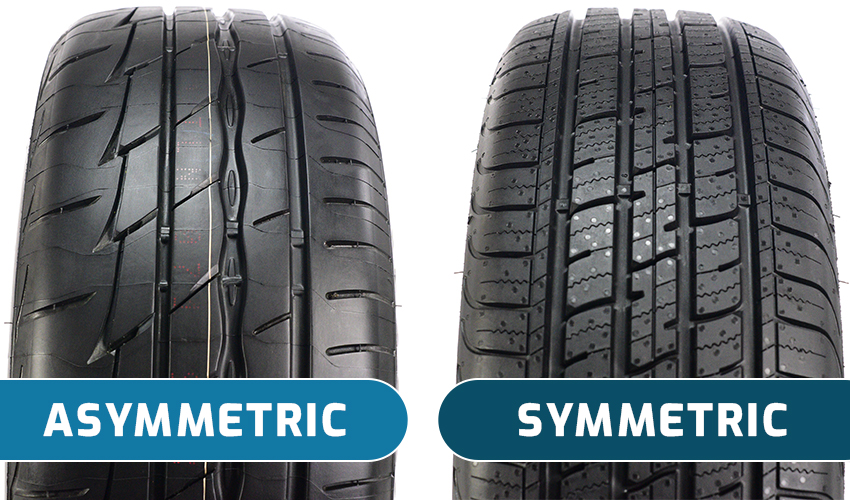
The Symmetrical Tire Tread Pattern
How do symmetric tires, the most common tire design, offer good grip?
This tire pattern often sports independent tread blocks or continuous ribs which maintain surface contact. These tires have the same pattern all across the footprint. The tread elements, along with their sipe detail, are able to enhance its surface traction.
Symmetric models are available with different tire treads, but most of them offer the following key features:
- Higher driving comfort levels
- Improved directional stability
- Better fuel economy
Asymmetrical vs Directional Tires
Compared to asymmetric and symmetrical tires, directional tires need to rotate in one direction. While most of them can be mounted on either side of the vehicle, you have to place them in a specific manner.
You can find this information on the tires’ sidewalls. If you wish to rotate them to the other side of the vehicle, you will have to remount the tires on the rim in the correct manner.

The Directional Tire Tread Pattern
There is a reason most winter tires feature a directional tread pattern. This pattern, with its lateral grooves creating an arrowhead design, and tire sipe pattern greatly enhance traction, even on ice- and snow-covered road surfaces.
A tire without good traction has less grip on the road, which can make it dangerous. For this reason, directional tire tread patterns offer good traction and superb hydroplaning resistance in versatile conditions to ensure safety. For this reason, these tires guarantee all season and winter traction, as well as high speed performance.
Directional treads offer the following key features:
- Upgraded snow and mud traction
- Enhanced hydroplaning resistance
- Improved high speed durability
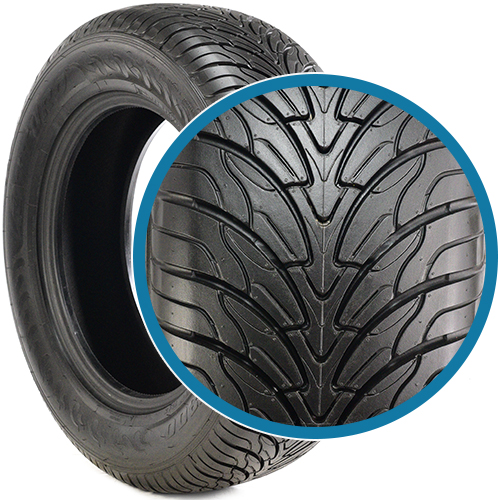
Frequently Asked Questions
What Do Tire Treads Do?
Tire treads basically provide the necessary traction each tire has to offer. Brands made different types of tire treads for various weather and road conditions. Additionally, they are also responsible for the vehicle’s controllability, comfort levels, and fuel economy.
How to Tell if Tires are Directional?
Directional tires usually feature a directional, asymmetric tread pattern, which results in a specific vehicle side placement. These tires will have this highlighted on their sidewalls. Directional tread tires are not necessarily directional tires, as you can mount them on both sides.
How Do Tire Treads Increase Friction?
Tire tread designs use their optimized elements and contact with the road surface in order to generate friction. Different tread patterns provide biting edges, enabling the tire’s braking capability. Wider tires tend to create more friction as their road contact patch is also bigger.


